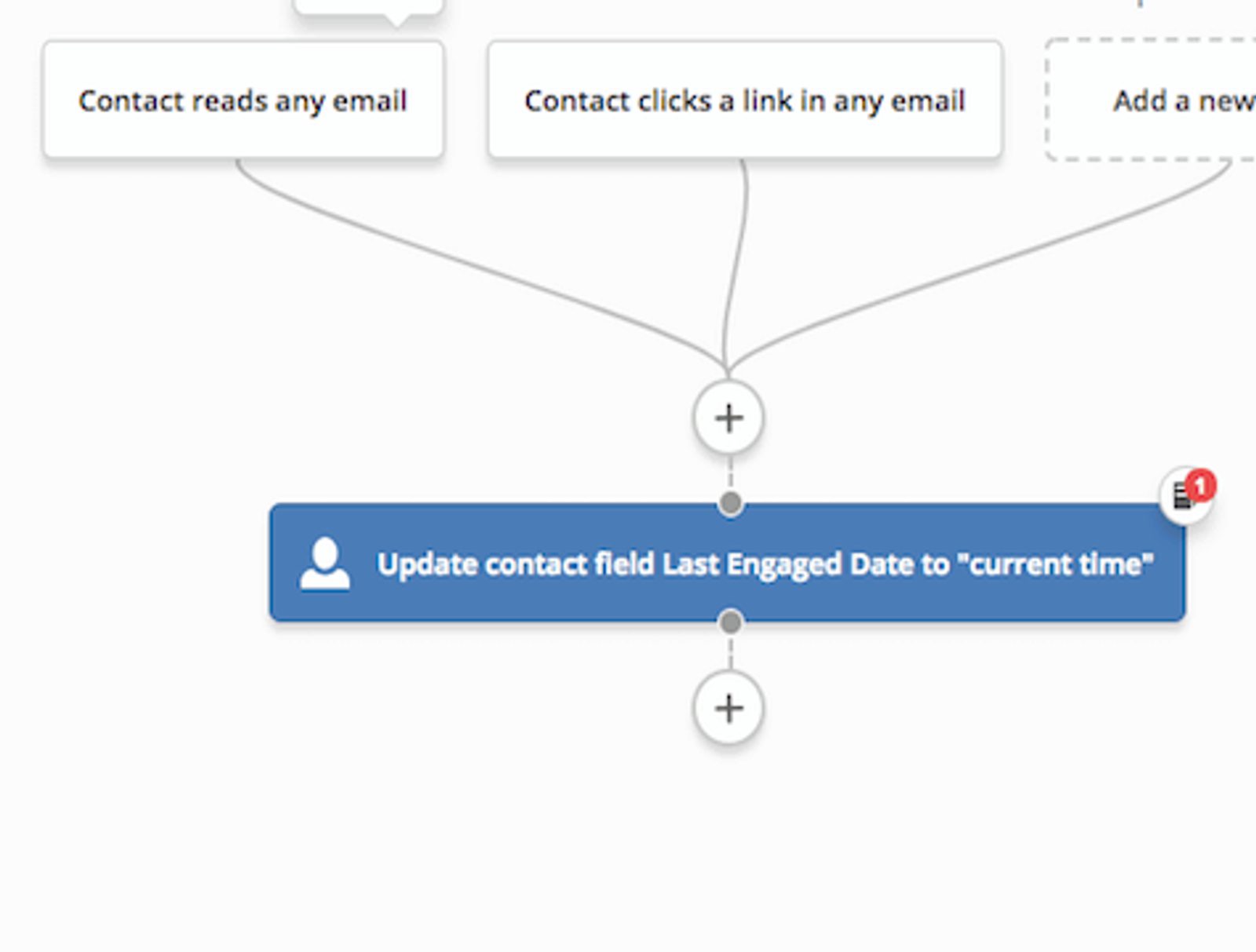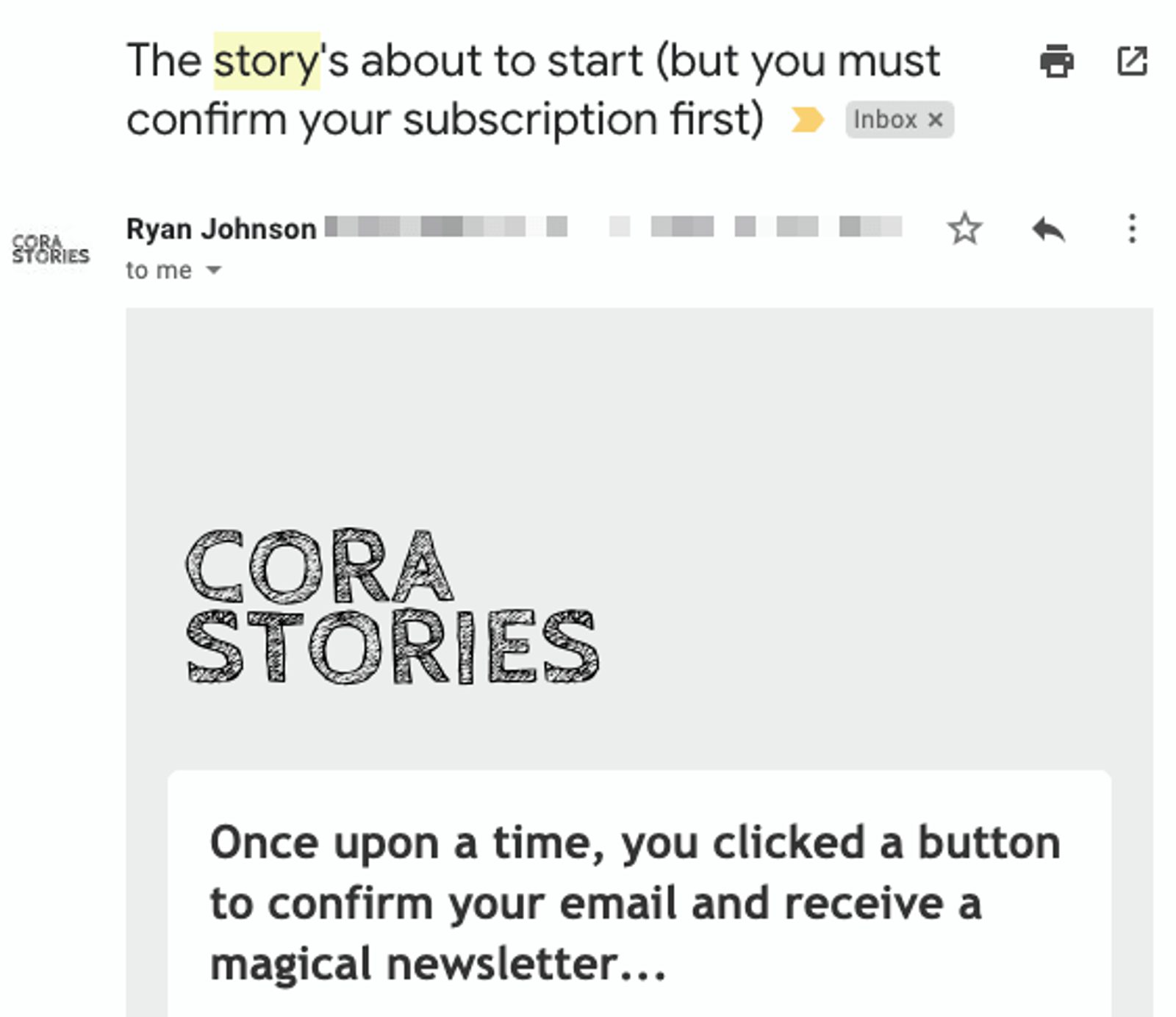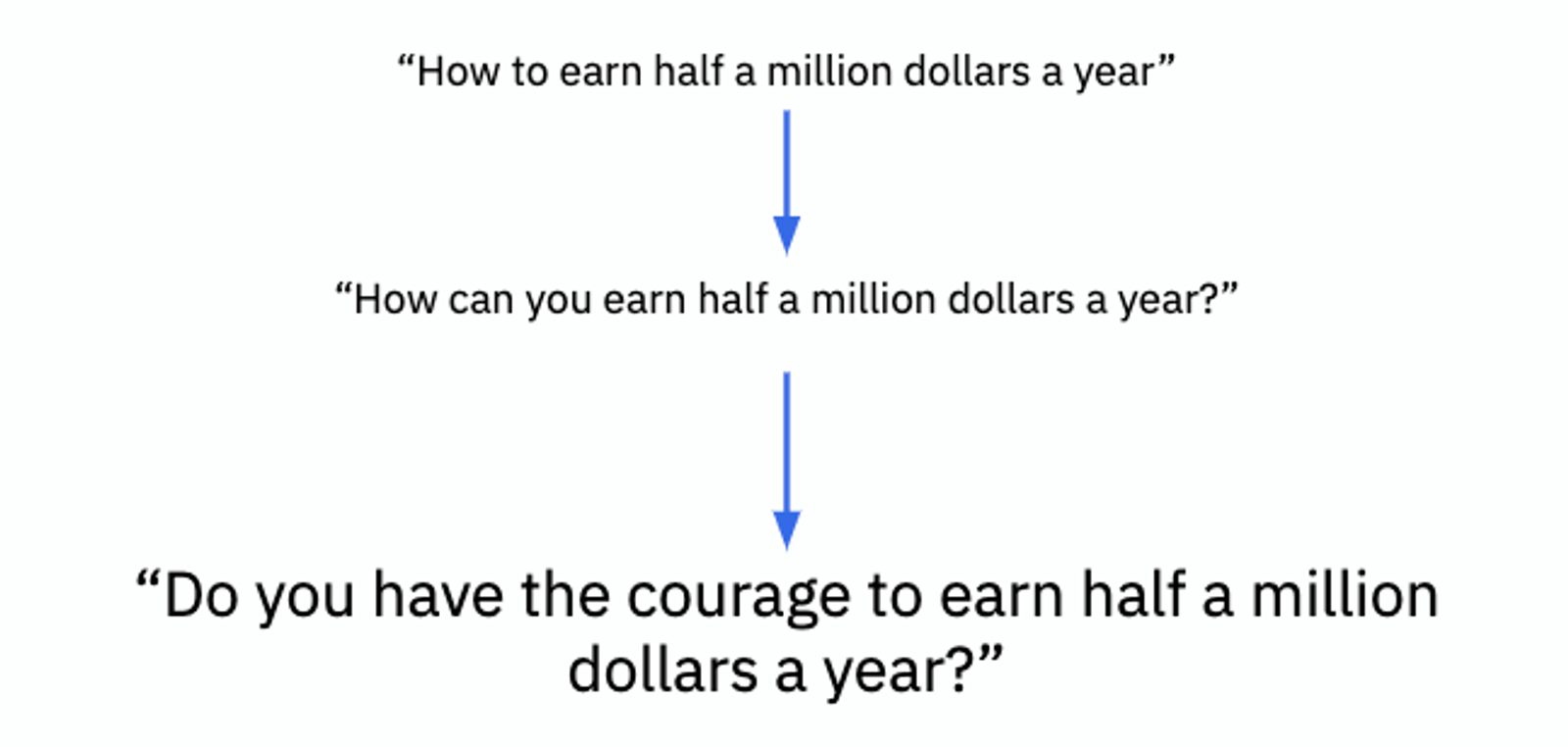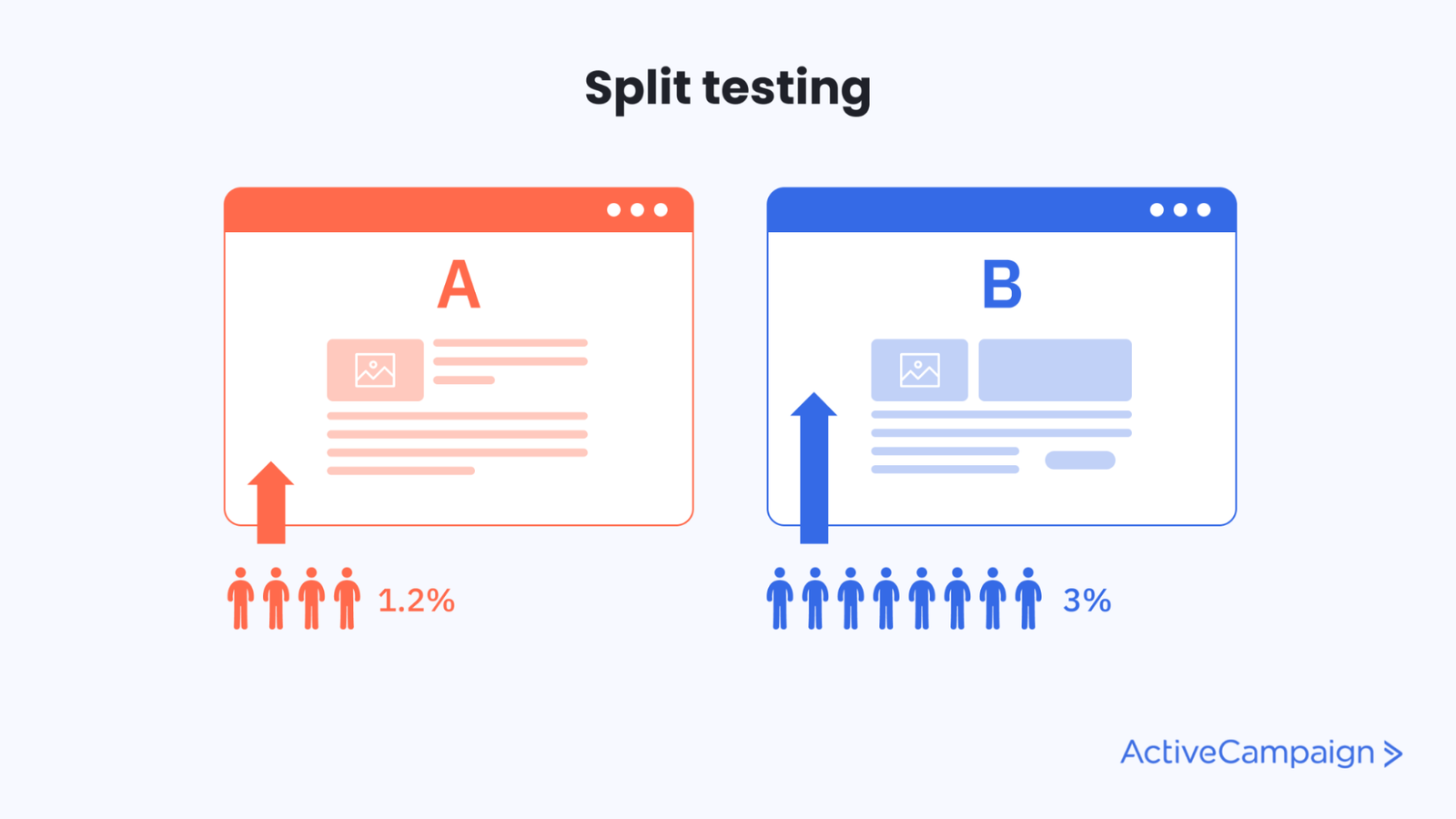An email is a chance to send relevant, valuable content to your customers. But if your email subject line fails, the rest of your content doesn’t matter.
The most important part of your email is the subject line — and it also happens to be the hardest part to write. There’s very little space and the customer’s decision of whether or not to open your email relies on it. How do you write a catchy email subject line that’s too good to ignore? How do you create a sense of urgency so they’ll be inclined to open your email and read it? And how to you write an email subject line that won't up in the spam folder?
This post will cover a variety of topics, including what a subject line is, four email types and how they affect subject lines, two major email subject line mistakes, and a handful of email subject line examples that work.
This article is part of our Perfect Email series. Click here for a complete guide on how to write an email, templates for different types, and formatting tips to boost your engagement.
What is an email subject line?
An email subject line is a short, concise phrase or sentence, usually about 40-50 characters max, that summarizes the main topic or purpose of an email, letter, or memo. It’s a short window to say everything you want to say about your email content — which means the pressure’s on. A good subject line will be engaging and interesting, providing value and sparking intrigue so people will want to open your email.
That seems simple enough, right? Writing a subject line, however, is less simple.
It’s easy to overburden yourself. When you're trying to write a subject line, it's easy to think, ‘Oh my God, I need people to open this, I need people to click it, I need people to buy it. I have to say all of this important stuff in the subject line and convince them to do all of it at once.’
That mentality is how you end up writing a subject line that doesn’t work.
A subject line’s effectiveness comes down to saying the most attention-grabbing, important part of your message. And sometimes, you barely have to say anything at all. Laura Belgray, a professional writer and founder of Talking Shrimp, released a list of subject lines, one of which ended up producing a nearly 39% email open rate.
And that word was “Dork.”

The job of a subject line isn’t to include every single bit of information about your email content. The job of a subject line is to make people curious enough to open your email.
How to write great email subject lines
Writing great email subject lines involves a combination of creativity, clarity, and relevance. You want to make sure you’re targeting the right audience with messaging and offers that are relevant to them so they’ll take action and engage with your email.
To do that, here’s what your subject line needs to do:
- Grab attention in the inbox. Make sure your key information is compelling. Your subject line has to stop someone from scrolling past your email. The subject line length shouldn't be too long. Surprise, curiosity, and even emojis can help do this.
- Narrow down who you’re talking to. An email that’s meant for one city or one group of people should only be sent to those people. Your subject line should reflect this. You can use email segmentation to divide your audience into separate lists so you’re able to send specific messaging to each one without worrying that your message won’t resonate.
- Sell directly. Use this tactic wisely. A hard sell in a subject line isn’t always the right approach but sometimes makes sense, like a reference to a specific product. You can entice someone to purchase with your subject line.
- Try using emojis. Research shows emails with emojis in the email subject line have a 56% higher open rate than emails with text-based subject lines. Try some out (in moderation and in staying on brand of course).
- Announce information (even to non-openers). For announcement emails, put the most important information in your subject line, so that people who don’t open your emails still read it. Maybe that person isn’t the right candidate for your offer that day, but they could be in the future, and they might remember that email subject line.
- Write like a human being. People like to be treated like humans and they want to connect with humans. While emails can and are often sent by marketing automation tools, that doesn’t mean you can’t inject some humanity. Use a conversational tone to come off as friendly and write your emails as you would to a close colleague.
- Ask them a question. Asking a question rather than writing a statement is automatically a more engaging experience. Open up the dialogue with your audience and leave room for them to wonder what they’ll see when they open your email. Examples include “Are you addressing X issue?” and “Are you going to let your 50% coupon go to waste?”

What can you include in a subject line to make sure it incorporates a good handful of the suggestions above? It’s a small space!
To get the job done, your subject line should include at least one of these:
- The benefit of your offer
- Your reader’s pain points
- Emotional words to create a sense of urgency
- Teaser phrases
- Phrases like “How to do X,” “X ways to do Y,” or “The complete guide to X”
The subject line is your reader’s first impression of your email. Are they going to stop and read what you have to say, or keep scrolling?
Why do people open your emails?
Why do people open emails in the first place? Your subject line is a major reason why someone does or doesn’t interact with your emails — but it’s not the only reason.
Here are three main reasons why people open emails:
- They’re expecting your email
- They already like your emails
- Your subject line promises them something or makes them curious
They’re expecting your email
When is your email list expecting to hear from you?
If someone signs up for a lead magnet, they’ll expect (and likely open) your email with the lead magnet because the subject line directly mentions it. If someone buys something from you, they’ll expect a transactional email like an order confirmation or receipt, which they’ll probably open. If your email newsletter hints at an upcoming announcement, you can build excitement so more people open your announcement email.
All of these instances highlight when your recipients are almost guaranteed to open your email because they’re expecting (and asked for) it.
They already like your emails
There are some newsletters and email lists that people sign up for just to get access to a resource or special offer. But just as often, people sign up for emails because they genuinely like the content.
If you send consistent, valuable content, your readers will open your emails regularly and even look forward to your next message. Building a brand around the concept of interacting and staying close to your audience will help you foster a sense of community and help your customers feel closer to your business. (Which is a great motivator to open your emails.)
Your subject line promises them something or makes them curious
We’ll cover this more a little later, but if you make someone so curious that they can’t resist learning more, they’ll have no choice but to open your email.
People like having information, and they like getting what they want. If your subject line promises them these things, like a special discount code or a limited-time price cut, they’re more likely to open your email.
Here are some things to consider that affect may your email open rate:
- What email list are you sending to? Is it a catch-all or segmented properly?
- What’s your deliverability reputation? Can you monitor your click-through rate and A/B test your subject lines in order to understand what engages your audience?
- Where are your recipients in the customer lifecycle? Does sending that email to them right now make sense for their unique customer experience?
Why is a good email subject line so important?
A well-crafted email subject line is crucial for several reasons.
It serves as the initial point of contact between the sender and the recipient. In the sea of emails that are sent daily, a compelling subject line stands out and captures the recipient's attention. It gives a brief preview of the email's content and entices them to open and engage with it.
And this is crucial. High open rates are not only essential for personal and professional correspondence but also for email marketing campaigns where engagement metrics can significantly impact the success of the campaign.
Let's take a look at some of the factors you should consider before you send an email.
Sending your emails to an engaged list matters — a lot
If you send emails to an unengaged email list, no subject line in the world will save your open rate. Sending to the right group by segmenting your email list matters to your open rate. If you send unsegmented emails, your emails open rate will be lower — even with a great subject line.
You can segment your email list with marketing automation. In ActiveCampaign, you can design email workflows to automatically send your campaigns to the right people.

Deliverability has a huge impact on your open rates
The quality of your email list, email content, and email open rates all affect your email deliverability. Low deliverability means that your emails are more likely to go to spam, or even not make it to your recipients at all, which can lower your open rates.
The effect goes both ways — the more people who open your emails, the more likely an inbox provider will be to view your content as legitimate (and not send you to spam). Most email providers help you manage your deliverability. The bottom line is: if your email open rate is low, your deliverability will suffer and therefore, your business will suffer.
The sender name can be a deciding factor for email opens
Do you open emails from someone you don’t know? Probably not (unless that email subject line was just too good). The sender name can be another deciding factor for email opens.
- Is this email coming from a person or a company email blast?
- Is the sender a person that the recipient recognizes?
- Does the recipient know why they’re getting this email?
It’s usually best to have an email come from an actual person’s name. People are more likely to open emails from familiar senders. You can test this out by creating a persona around your brand with a human name (let’s say Kelly). By always sending your emails [Name from Company], you can start creating a closer, more personal connection with your audience.
Where are your recipients in the customer lifecycle?
People who are already familiar with your business don’t need the same emails that new contacts do. It’s important to segment your emails based on what stage of the customer lifecycle people are in. An existing customer who gets a “Welcome!” email is probably going to delete it.
Someone who just signed up for your email list or made a first purchase is much more likely to open the welcome or order confirmation emails if you send the right ones at the right time. People like to feel like a brand knows them personally, so make sure your subject lines are targeted to each individual accordingly.
Need a place to test your subject lines and build email campaigns?
Email subject line best practices
When you begin to write and test your email subject lines, there are certain best practices you should stick to in order to increase the chances of your audience opening your email.
These are the key subject line best practices to use in your email marketing strategy:
- Be clear and concise. Keep your subject line short and to the point while also clearly conveying the purpose or main idea of the email. Research shows that email subject lines between 61-70 characters are read the most, at 17%.
- Use actionable language. Use verbs that prompt action or convey a sense of engagement to encourage email recipients to open, read, or respond to the email.
- Personalize when appropriate. Include the recipient's name or reference relevant details like their location, last purchase, interests, etc. Personalizing your subject line can increase engagement and make the email feel more relevant. According to a study. open rates increase by a massive 50% when subject lines are personalized.
- Create a sense of urgency (when relevant). If there's a deadline or time-sensitive information, communicate it in the subject line. Use urgency to your advantage in order to encourage quick action.
- Test for clarity and impact. Write a handful of subject lines for every email and A/B test the top two to see which performs better. Plus, always consider how the subject line will appear on mobile devices.
- Stay consistent with brand voice. You should always maintain a consistent tone and style that aligns with your unique brand. Consistency helps recipients recognize and trust your emails.
Remember, the effectiveness of subject lines can vary based on the audience and the nature of the email content, so it's incredibly beneficial to analyze and adapt your approach over time.
Four email types (and how they affect subject lines)
How does the type of email affect your subject line? Your email content is based on what you’re trying to promote. Different content falls into different types of emails — and different subject lines.
Here are four email types and how they affect your subject line:
- Announcement or special offer email
- Resource delivery email
- Reactive email
- Content email (like a newsletter, blog, or blast)
Announcement or special offer email
An announcement or special offer email is an email that — you guessed it — makes an announcement or shares a special offer.
This kind of email can include:
- Event announcements
- Company updates
- Discount offers
This is an announcement email from Quip, announcing their limited edition pink toothbrush.

On top of introducing this limited edition product, Quip also uses FOMO with a clever design to show us that this brush won’t be here forever. This urges recipients to act fast if they’re interested.
How does the type of email impact the subject line?
- Make your announcement clear and compelling
- Include the most important details of your announcement in the subject line
Subject lines in these emails don’t have to be fancy; they need to be clear and compelling. As legendary copywriter David Ogilvy says, “Tell the truth, but make the truth fascinating.”
Resource delivery email
A resource delivery email delivers gated content to someone who signed up for your email list or filled out your lead magnet form. A resource delivery email subject line should tell people exactly what to expect and what they need to do to access the content.

How does this type of email impact the subject line?
“The story’s about to start (but you must confirm your subscription first).” Cora Stories tells you what to expect (you’re about to get your story), and what you have to do first (confirm your email to get their newsletter).
Reactive email
A reactive email is an email that forces some type of action out of the recipient.
Here’s how reactive emails work:
- Someone takes an action that makes them more invested in what happens next
- The subject line of your follow-up email prompts them to (re)act
And remember – it doesn’t have to be a clever, punny subject line, just as long as it’s clear. Abandoned cart emails, like this one from ThredUp, are a good example of reactive emails.

How does this type of email impact the subject line?
The subject line is clear about what happened (the shopper abandoned their cart) and what they need to do needs to happen next (rescue your cart and finish your transaction).
Content email
A content email is a message that shares information, like:
- A newsletter
- Blog or other content
- Blast updates to all customers
These types of emails are typically less segmented and sent on a regular basis, like the weekly InVision newsletter.

How does this type of email impact the subject line?
- A weekly newsletter goes to people who want to receive it regularly, which means puns like InVision uses in the subject lines can work better than they do for other types of emails. It’s a personalized, regular email relationship, which makes more “fun” subject lines work.
- These types of emails share information that you don’t want people to miss. Surprising or unexpected phrases, like “A good pizza advice” can catch the eye and encourage opens.
Common email subject line mistakes to avoid
No subject line is perfect. But to maximize your email opens, there are a few subject line mistakes you’ll want to be sure to avoid:
- Vagueness and ambiguity: Subject lines should be clear and specific. Avoid vague language that may confuse recipients about the email's content.
- Misleading information: Never use deceptive subject lines to trick recipients into opening the email. This can damage trust and credibility.
- Overuse of punctuation and symbols: Excessive use of exclamation points, all caps, or special symbols can make your email look unprofessional and spammy.
- Irrelevance: Ensure that the subject line accurately reflects the content of the email. Misleading recipients with an unrelated subject line can lead to frustration.
- Lengthy subject lines: Keep subject lines concise. Long subject lines can get cut off, especially on mobile devices, and may decrease readability.
- Spelling and grammar errors: Proofread your subject lines to avoid spelling and grammar mistakes. Errors can detract from the professionalism of your message.
- Ignoring mobile optimization: Many people check emails on mobile devices. Make sure your subject lines are mobile-friendly and display well on smaller screens.
By avoiding these mistakes, you can enhance the effectiveness of your email subject lines and improve the overall success of your email communication efforts.
Two elements to include in every subject line
Here are two things you can’t skip when you write subject lines:
- Relevance. How does your subject line connect to what your reader wants, or something they’ve done?
- Curiosity. How can your subject line tease your email content, without giving everything away?
Relevance is fairly straightforward. Send emails that are relevant to people. The emails people get need to be relevant to what you know about them, including:
- Age
- Gender
- Location
- Lifecycle stage
And plenty more. But what’s even more important than being relevant is making people curious. Behavioral economist and Carnegie Mellon professor George Lowenstein researched and wrote a paper on the psychology of curiosity.
Here are Lowenstein’s five ways to make people curious:
- Ask questions
- Start stories but leave them unfinished
- Be unexpected
- Imply that you have information that they don’t
- Imply that THEY have information that they’ve just forgotten
Adding two or three of these curiosity levers to your subject line copy gives your email a much better chance of being opened. Let’s see how it works on an actual line of copy.
Consider this headline: “How to earn half a million dollars a year.”
When you add curiosity levers, your headline goes through a transformation that gives it a hook:

What makes “Do you have the courage to earn half a million dollars a year?” more effective than “How to earn half a million dollars a year”? The initial version implies that you have information that your reader doesn’t — but that doesn’t mean they believe you.
The final version still implies that you have that information, but that’s not the main focus of the subject line. Instead, asking about courage is unexpected and interesting. It makes people think “I don’t know, do I?” which makes them open the email.
24 best email subject lines
Here are 24 different examples of business email subject lines that work.
FOMO (fear of missing out) subject lines
When writing FOMO subject lines, be sure to play into what the recipient will miss if they don’t take a certain action quickly.
- Miss our last sale? Don’t miss this one, starting now!
- Only one day left to save on [product/offering]!
- Final call: Early bird tickets for [event] end tonight
- Today only! Get [product/offering] at [%] off.
Customer pain points subject lines
All customers have challenges and pain points that they’re looking to get rid of. If your brand solves that problem, highlight that in your subject line. Provide value in the first thing your customers will see (your subject line).
- Say goodbye to [pain point] forever with our new [product/offering]
- Stop getting bogged down by [pain point]. We have a solution for you
- Save time and money with this technique.
- You’re sick of [pain point], we know. Click here for the cure.
Curiosity-inducing subject lines
Subject lines can also be incredibly curiosity-inducing. Think back to the “Dork” subject line at the beginning of this article. This can really work well in the right circumstances.
- Don’t open this email
- We’re doing something totally different.
- Drink some water. Sit up straight. Open this email.
- You won’t believe what we’re about to roll out…
Personalized subject lines
As we discussed before, personalization is a powerful technique to capture someone’s attention. Connect with your audience and address them directly.
- Happy birthday, Josh! Here’s a birthday offer just for you
- Liliana, we miss you. You’ve been gone but here’s what you missed
- We noticed you bought [product/offering]. How about this…
- Are you free on Saturday? The perfect weekend plans for you inside
Funny subject lines
Incorporating a lighthearted tone in your subject lines can be the key to connecting with your customers. When applicable, consider being playful and writing some subject lines that don’t take themselves too seriously. Because people value authenticity, you may see a spike in your open rates.
- We have a joke so funny, you won’t notice it’s an email
- Don’t you dare buy our coffee. Our delicious, fresh coffee is the worst!
- askjdhkjdfh (sorry, we’re excited) up to 50% off
- C’mon, it’s Friday and you’re killing time anyway
Retargeting subject lines
Retargeting emails help you to follow up with recipients who didn’t open your email. Retarget them with a new subject line and increase your chances of them engaging the second time around.
- Here’s what you missed in our last email…
- Did you forget something?
- Better marketing campaigns are in your future. Here’s how we help
- Insights you missed from our last blog post
Short on time, or need some help coming up with great subject lines? Let us give you some subject line ideas with our free subject line generator below.
Make a good first impression
Hopefully you’re walking away with plenty of actionable techniques you can use to write, test, and improve the email subject lines of your future campaigns. By taking these tips and tricks into account, you’re sure to strengthen the relationship between you and your customers, understand what types of subject lines resonate with them, and start seeing an uptick in open rates.
Check out other articles that can help you become a subject line expert:
- The 9 Most Effective Re-engagement Email Subject Lines
- What Is an Email Preheader and How Can It Increase Email Open Rates?
- Win-back Email Subject Lines That Bring Customers Back
Are you ready to start sending emails today? Well, good thing ActiveCampaign offers a free trial.
Sign up in the box to the right → and start testing your subject lines to understand what your audience likes to engage with.








